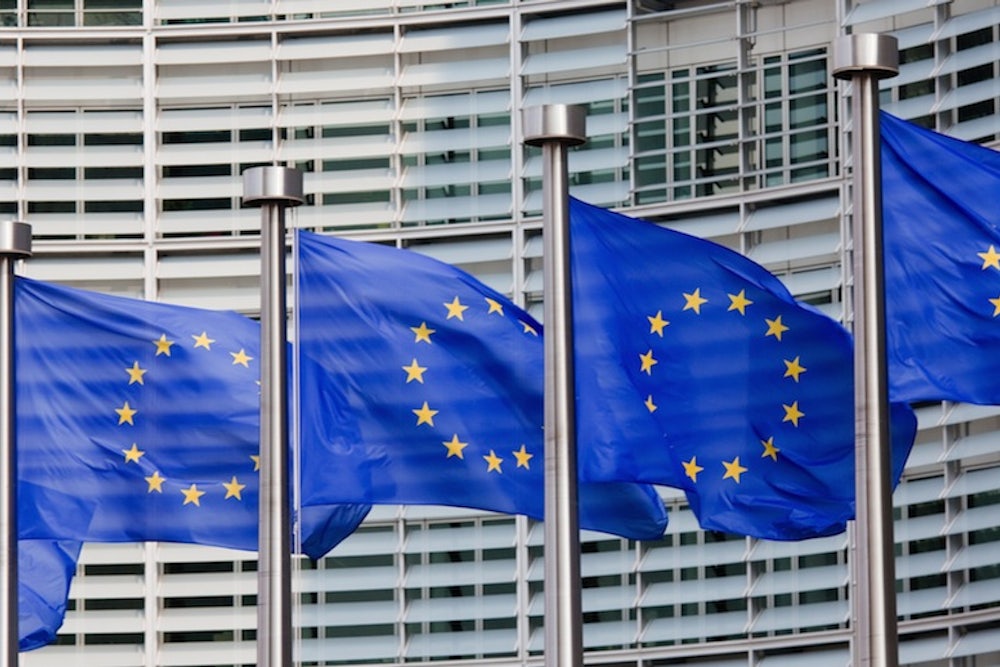The European flag consists of a simple blue background with 12 gold stars arranged in a circle. But the 12 stars don’t represent anything specific, and the color blue was selected because the other primary colors were taken. In fact, the European flag technically isn’t even a flag, but an emblem that can be reproduced on rectangular pieces of fabric—a linguistic compromise to assuage fears of member states that the European flag could eventually replace their own flag.
After World War II, there was widespread agreement that greater political and economic cooperation could prevent another catastrophic war. There was less agreement about how that cooperation should take place. One of the earlier attempts at European integration was called the European Council. As an organization, it made few policy contributions, but in 1955, they came up with a design for a flag that all member states could agree upon. This task proved so arduous that even after the European Council was absorbed by the the predecessor to the European Union, members decided to keep the original design. On May 29, 1986, the 12-starred flag was relaunched as the flag of Europe.
In this video, journalist Michael Hobbes explains the comical, multi-decade process of coming up with the seemingly simple design.
